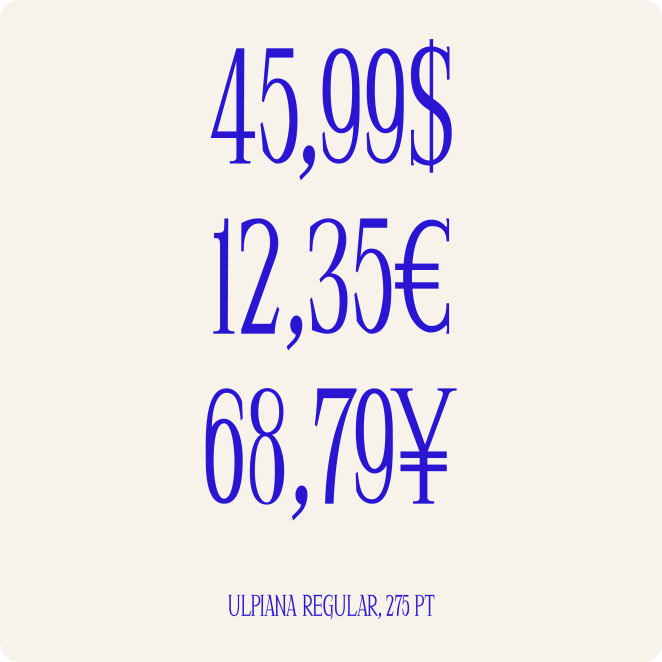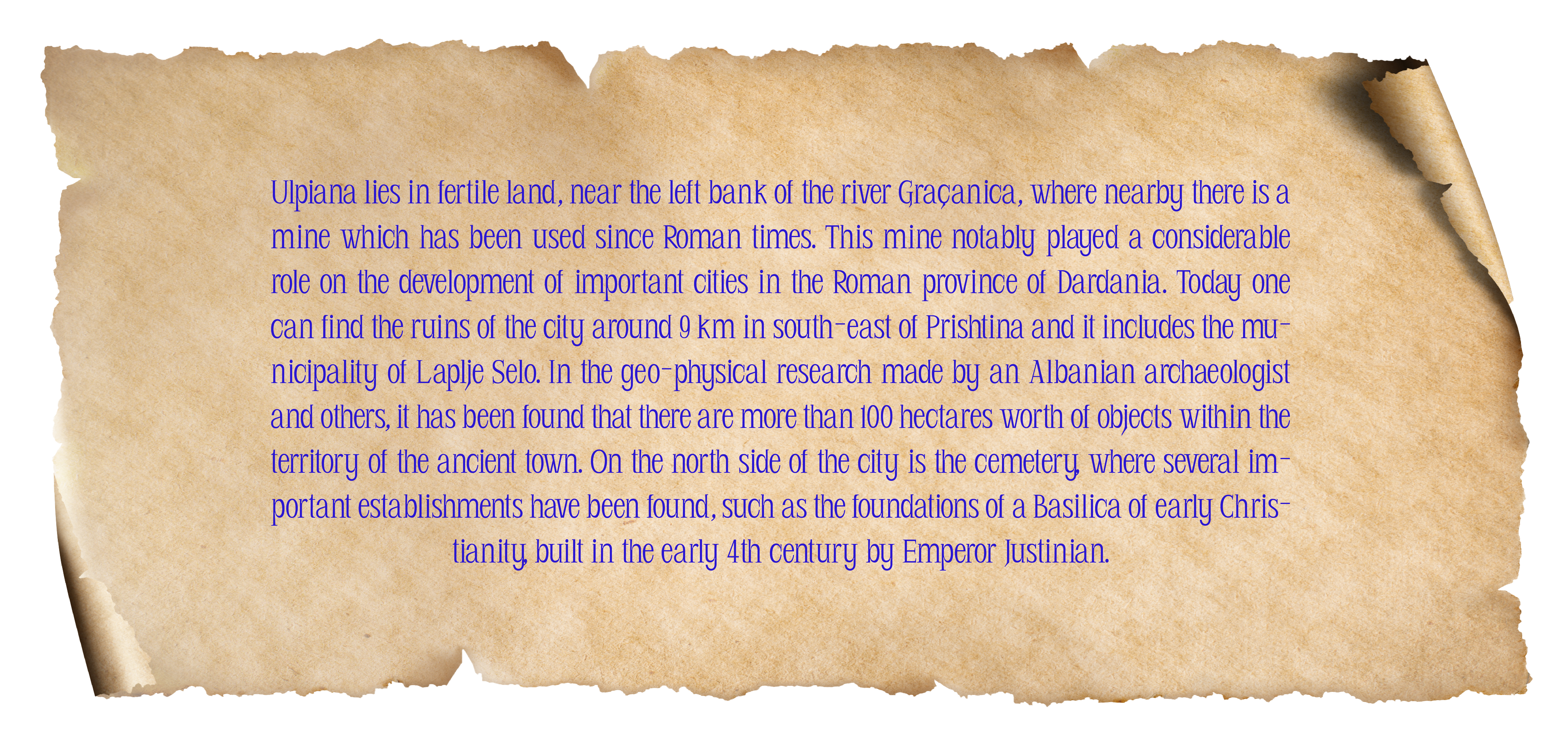ULPIANA
WITH ITALICS
A FREE LIBRE TYPEFACE
CAN BE USED COMMERCIALLY
- REGULAR & SLANTED VERSION
- ULPIANA REGULAR
- ULPIANA SLANTED
- HISTORY
Rreth 12 km në juglindje të Prishtinës, Ulpiana shkëlqeu në një territor prej 35.5 hek-tarësh brenda mureve të qytetit, territor i cili i përkiste fisit ilir të dardanëve. Pas okup-imit të Dardanisë nga perandoria romake, filloi krijimi i qytetit të urbanizuar kur dhe mori statusin e Municipit. Shumë artefakte që u gjetën në Ulpianë gjatë gërmimeve arkeologjike janë të ekspozuara në Muzeun Kombëtar të Kosovës. Gjatë vitit, mijëra njerëz vizitojnë Ulpianën, duke gjetur kështu një mënyrë që nëpërmjet gjetjeve arkeologjike, të zhyten në një udhëtim historik në të kaluarën tonë të pasur.
About 12 km southeast of Prishtina, Ulpiana shone in a territory of 35.5 hectares within the city walls, territory which belonged to the Illyrian tribe of the Dardanians. After the occupation of Dardania by the Roman Empire, the creation of the urbanized city began, receiving the status of a Municipality. Many artifacts that were found in Ulpiana during archaeological excavations are exhibited in the National Museum of Kosovo. During the year, thousands of people visit Ulpiana and through archaeological findings, they can immerse themselves in a historical journey into our rich past.
- ULPIANA DETAILS
- STYLES
- VERSION
- FORMATS
- DESIGNS
- 2 STYLES WITH 95 GLYPHS EACH
- V1.000
- OTF
- VOLT FOUNDRY
- VARIATIONS
Aa
ULPIANA
REGULAR
ULPIANA REGULAR
LETTER SIZE
125 PT
ULPIANA
SLANTED
LETTER SPACING
0.00 PT
ULPIANA WAS AN IMPORTANT PLACE FOR THE DARDAN KINGDOM. THERE IS EVIDENCE THAT THE SITE DATES BACK TO THE NEOLITHIC AROUND 9000 BC. THE AREA WAS INHABITED BY THE DARDAN AND ILLYRIANS DURING THE CLASSICAL PERIOD.
- INFORMATION
THE TYPEFACE SUPPORTS REGULAR & ITALIC CHARACTERS!
THE TYPEFACE SUPPORTS LOWER & UPPER CHARACTERS!

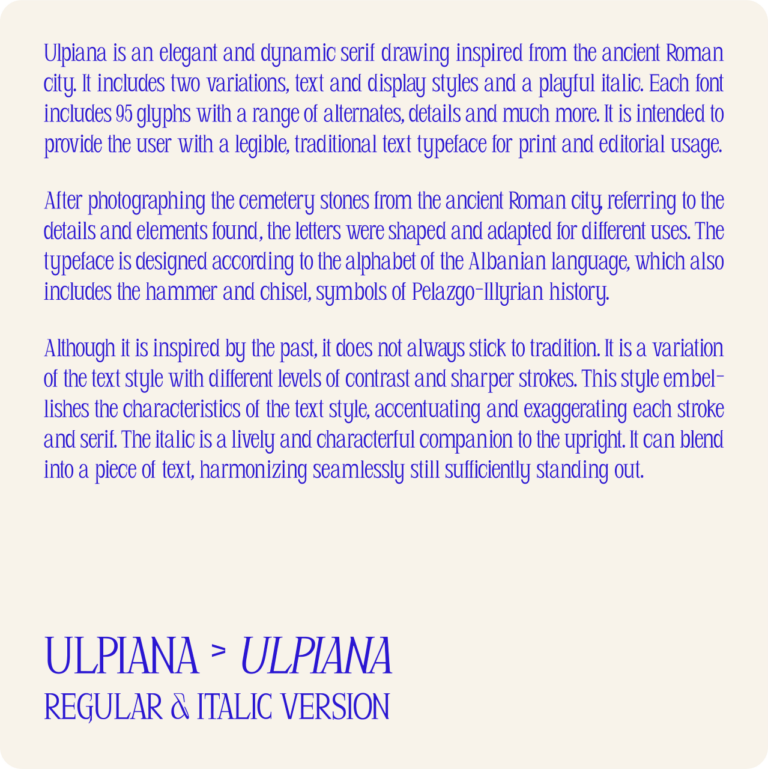
- FONT IN USE
Ulpiana lies in fertile land, near the left bank of the river Graçanica, where nearby there is a mine which has been used since Roman times. This mine notably played a considerable role on the development of important cities in the Roman province of Dardania. Today one can find the ruins of the city around 9 km in south-east of Prishtina and it includes the municipality of Laplje Selo. In the geo-physical research made by an Albanian archaeologist and others, it has been found that there are more than 100 hectares worth of objects within the territory of the ancient town. On the north side of the city is the cemetery, where several important establishments have been found, such as the foundations of a Basilica (Paleolithic-Christian) of early Christianity, built in the early 4th century by Emperor Justinian. Also found is the north entrance of the city, with its walls, a memorium and a room or a form of funeral.
Ulpiana played an important role in the development of the most important cities in the Roman province of Dardania. Ulpiana is mentioned in ancient sources from the second decade of the 2ndcentury AD. Since then it played an important role during the invasive expeditions when the emperor could stop during his travels. Ulpiana became an important center, Episcopal joining Scupi city (modern Skopje, North Macedonia) until the establishment of Justiniana Prima. Ulpiana had a great garrison also in Pseudocomitatenses Ulpiansis. Evidence exists that Emperor Theodosius I during the transition to Thessaloniki stayed in Ulpiana (cod. THEOD I 33-34) for a period of time. In the 5th century, the city was under the rule of the Goths. In 479 King Theodemir sent his son Theoderic the Great with 3,000 soldiers to destroy the city. Ulpiana was among the largest settlements in the Balkans of the late antiquity.
The first landfills in the ruins of the ancient city were made before 1990. Ulpiana archaeological research for the first time took place in 1953, where four graves were dug in the northern part of the cemetery. Investigations are concentrated in the northern settlement and cemetery, where different
findings have been discovered: the foundations of a basilica (paleo Christian) early Christianity, built at the beginning of the 6th century by the Emperor Justinian, the northern entrance of fortification (walls of the city) and Memoriumi, a small room or ambient funeral. The remains of the building with beautiful mosaics are found in the southern part of the city, which have been excavated recently by municipal workers when placing pipes and water pipes across the zone that covers the ancient. Also discovered a rich treasure containing silver items, perfume bottles and everyday objects dated somewhere in the 3rd century BC.
- REGULAR 25 PT
- REGULAR 25 PT
Ulpiana was the administrative, economic and cultural center in Roman times, eleven kilometers southeast of Prishtina. Archaelogical excavations have taken place there since 1954. These brought to light a multitude of extremely interesting finds from a flourishing city of the Roman Empire, which help us understand our history.

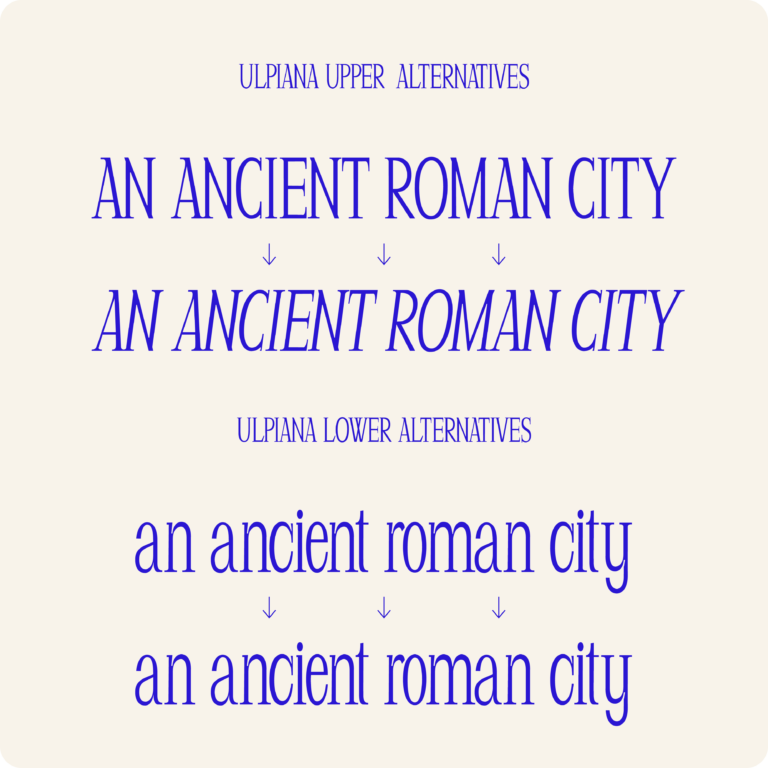
- CHARACTERS
ULPIANA
REGULAR
